What Vegetables Can Grow in 4 to 6 Hours of Sunlight Per Day?
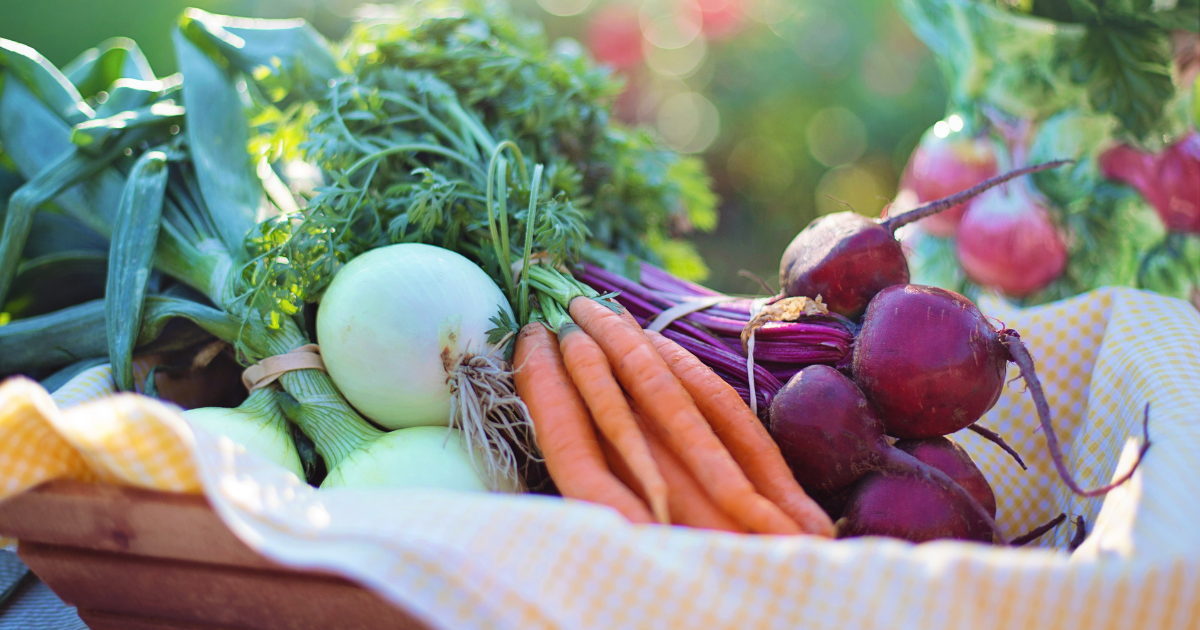
In this beginner-friendly guide, we unveil a list of 15 vegetables that thrive with merely 4 hours of sun each day, making them ideal candidates for your less sunlit garden spaces. Whether you are a budding gardener or have some green thumb experience, this compilation aims to broaden your horizons about the veggies that can flourish even with limited sunlight. From the cool embrace of Brassicas to the sun-loving cherry tomatoes, we’ve got vegetables that adapt well even with a scant amount of daily sunlight.
15 Vegetables That Can Thrive in 4 to 6 Hours of Sunlight per Day:
1. Broccoli
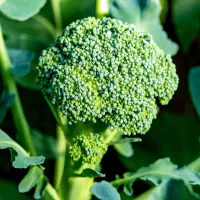
Best time to plant: Spring or fall
Broccoli is a nutritious vegetable belonging to the Brassica genus. Thriving in cooler climates, it requires 4-6 hours of sunlight daily. It’s recognized by its green, tree-like heads rich in vitamins, minerals, and antioxidants. When planted in well-draining, fertile soil, it grows robustly, producing a central head.
After the main head’s harvest, the plant often yields smaller secondary heads from side shoots. Regular watering, partial sun, and cool temperatures keep it healthy, delaying flowering and extending the harvesting period, making broccoli a rewarding vegetable for gardeners.
2. Cauliflower

Best time to plant: Spring (early to mid- April)
Cauliflower, another member of the Brassica family, also prefers 4-6 hours of sunlight daily. Its large, white, compact head (known as a curd) is a dietary staple with a mild, slightly nutty flavor. Similar to broccoli, after the main head is harvested, smaller heads may develop.
It thrives in cool temperatures with consistent moisture in well-draining soil, ensuring a vibrant growth. The partial sun helps in preventing premature bolting, allowing the plant to mature at a steady pace. It’s a versatile vegetable, used in numerous culinary applications from mashes to roasted dishes.
3. Cherry Tomato
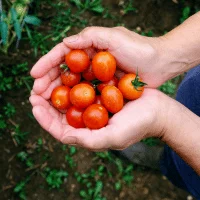
Best time to plant: Spring
Cherry tomatoes are vibrant, bite-sized fruits, contrasting the cool-weather Brassicas, as they flourish in warm, sunny conditions, ideally with 6-8 hours of sunlight daily, but can manage with 4-6 hours. Best planted late spring to early summer, they thrive in well-draining, fertile soil, with consistent watering, especially during fruiting.
Planting varies regionally, typically between March and June in temperate climates. They grow on vigorous vines, often needing support via staking or caging. Prolific producers, they yield fruit until the first frost, with late summer’s warm days and cool nights enhancing their sweetness, making them a rewarding, colorful addition to any garden.
4. Brussels Sprouts
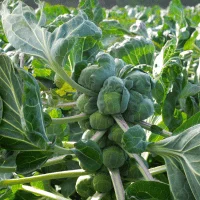
Best time to plant: Early spring, or mid- to late summer
Brussels sprouts are small, green buds resembling miniature cabbages, growing along a tall stalk. Belonging to the Brassica genus, they require 4-6 hours of sunlight daily, thriving in cooler climates. A well-draining, fertile soil provides an ideal growing environment.
They mature over a long growing season, with the lower sprouts maturing first. The partial sunlight daily helps in maintaining a steady growth rate, preventing bolting and promoting the development of tight, firm sprouts. Known for their nutty, slightly bitter taste, they are a fall and winter vegetable staple.
5. Cabbage
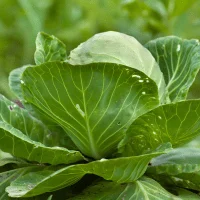
Best time to plant: Late winter to mid-spring
Cabbage, with its densely-leaved heads, is a cool-weather vegetable in the Brassica family requiring 4-6 hours of sunlight daily. It enjoys a well-draining, nutrient-rich soil and consistent moisture. The partial sun exposure helps in keeping the plant cool, promoting a longer growing season which results in larger heads.
Harvesting occurs before the central stem begins to elongate, which would lead to flowering. Cabbage is a versatile vegetable, forming the basis of numerous dishes worldwide. Its hardiness and ability to thrive in partial sun make it a popular choice among gardeners.
6. Radish
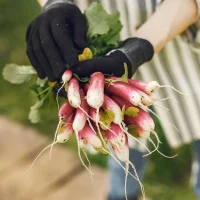
Best time to plant: Spring or fall (April – May or August – September)
Radishes are a delight for garden enthusiasts. Their rapid growth, maturing in just 3-4 weeks, offers a quick reward for your gardening efforts. Research data emphasizes that radishes can yield abundantly with just 4-6 hours of sunlight. Their peppery bite adds zest to salads and dishes.
For optimal growth, choose well-draining soil, maintain consistent moisture, and avoid overcrowding. Their rapid growth allows for multiple plantings in one season, maximizing your harvest. Plus, their vibrant red hue adds a splash of color to your garden.
7. Carrot
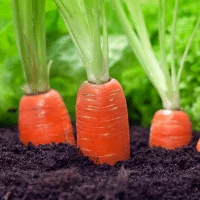
Best time to plant: Spring or fall (April to early July or mid-September)
Carrots are a garden staple, loved for their sweet crunch. The University of California Cooperative Extension’s studies reveal that carrots can thrive with limited sunlight. Their root nature might suggest a need for abundant sun, but they’re surprisingly adaptable.
For the best results, select a deep, sandy, and stone-free soil. This ensures straight growth and minimizes forking. Regular watering, without letting the soil dry out, will produce juicy, sweet carrots. Plus, their feathery green tops create a beautiful contrast in garden beds.
Related: 25 Fruits & Vegetables You Can Grow in 30 Days
8. Potato
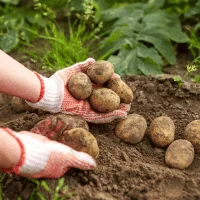
Best time to plant: Spring (January to March) or for cooler areas: April and June
Potatoes, a global staple, are more adaptable than one might think. The University of Maine Cooperative Extension’s research suggests that while they might take longer to mature in limited sunlight, they’ll still produce a commendable yield with just 4 hours of sun.
Plant them in loose, well-draining soil. Hilling the soil around them prevents the tubers from turning green. Their underground growth is a marvel, and the excitement of unearthing potatoes is akin to a treasure hunt, making them a favorite among gardeners.
9. Beet
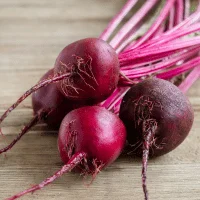
Best time to plant: Spring
Beets offer a double delight: nutritious roots and flavorful greens. The University of Minnesota Extension’s studies show that beets can prosper with minimal sunlight. Their earthy flavor is a culinary favorite. Plant them in deep, organic-rich soil.
Regular thinning ensures ample space for root expansion. Water consistently for a dual harvest of sweet beets and tender greens. Their deep red hue can also serve as a natural dye, making them a multifunctional garden gem.
10. Lettuce
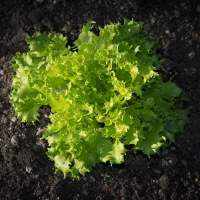
Best time to plant: Spring or fall
Lettuce, with its myriad of varieties, is a cool-season crop that thrives in temperatures between 60-65°F. The University of Maryland Extension’s research indicates that with just 4 hours of sunlight, lettuce can still thrive. Their tender leaves are a salad staple.
For a prolonged harvest, opt for staggered plantings. Soil should be kept moist, and mulching can help retain soil moisture, ensuring tender and flavorful leaves. From crisp romaine to velvety butterhead, there’s a lettuce variety for every palate.
11. Spinach
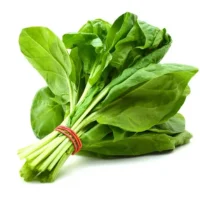
Best time to plant: Late winter or early spring
Spinach, a nutrient-rich leafy green, is a gardener’s dream. The Journal of Agricultural Science highlights that even with limited sunlight, spinach can produce bountifully. Its soft leaves are excellent for salads, blended drinks, and culinary creations.
A fertile, well-draining soil that’s kept consistently moist will ensure large, tender leaves. Regular harvesting encourages continuous growth. Plus, its rich iron content is a health boon.
12. Kale
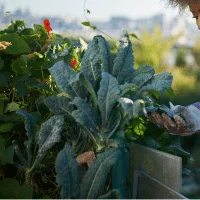
Best time to plant: A month prior to the last frost occurrence in spring, and six weeks ahead of the first frost onset in fall
Kale, the darling of the health food world, is also a gardener’s favorite. Oregon State University’s research underscores its resilience, proving that it can flourish even in limited sunlight. Its curly leaves are not only nutritious but also add texture to garden beds.
Regular watering and nutrient-rich soil will guarantee a harvest that can extend into the colder months. Whether in smoothies, chips, or sautés, kale is versatile.
13. Arugula
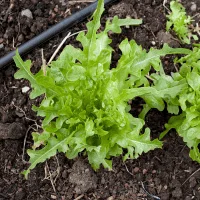
Best time to plant: Early spring or fall
Arugula, with its peppery notes, is a gourmet green. The University of Florida IFAS Extension’s studies show that arugula can yield significantly even with minimal sun. Its unique flavor profile enhances salads, pizzas, and pastas.
Planting in the cooler months and ensuring moist, well-draining soil will result in a spicy, robust harvest. Plus, its delicate white flowers are edible and ornamental.
14. Swiss Chard
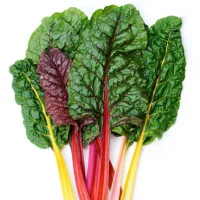
Best time to plant: Spring (2 to 4 weeks before the last frost date)
Swiss chard, a leafy green with vibrant stems, is both ornamental and edible. Cornell University’s research reveals its adaptability, proving that it can thrive in limited sunlight. Its rainbow-colored stems are a visual treat in any garden.
A consistent watering schedule and fertile soil will ensure a harvest that’s both visually stunning and delicious. Its mild flavor is a favorite in sautés and soups.
15. Bok Choy
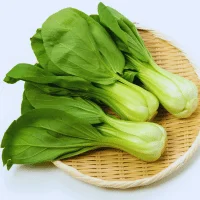
Best time to plant: Spring or late summer
Bok choy, an Asian green, is both delicious and adaptable. The University of Georgia Extension’s research confirms its adaptability to limited sunlight. Its juicy stems and tender leaves are a stir-fry staple. For the best results, ensure the soil is well-draining and consistently moist.
Harvest when young for the most tender texture. Its rapid growth ensures a quick harvest, making it a gardener’s favorite.
Must Read: Why Are Tomatoes Flowering But Not Fruiting? Causes and Solutions
Conclusion
The list of vegetables that grow in 4 hours of sun is both diverse and promising. With the right knowledge and care, even gardens with limited sunlight can be a haven of fresh, homegrown produce. Embrace the shade and let your garden shine!
